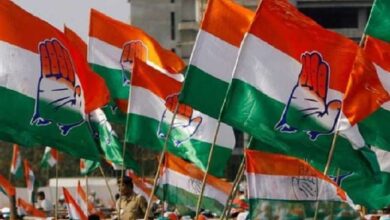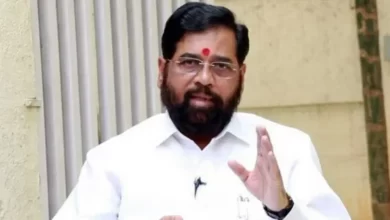Growing extent of mob violence

[ad_1]
Saurabh Jain
Mob violence is a social perversion that does not believe in any religion. In a nation like India, in which citizens of different caste, religion, language reside, such incidents prove to be against its nature. Questions also arise on human intelligence and conscience that why are we getting so attracted to violence? What do we want to prove by doing such incidents by reducing our conscience on the basis of mere rumours?
The news of mob violence coming from different parts of the country has once again raised concerns. A few days ago, a man was tied to a vehicle and dragged in Neemuch, Madhya Pradesh, in which he died. The side effect of such incidents is that instead of curbing them, the attraction of people towards them is increasing. This is the reason that incidents of mob violence are continuously coming to the fore in Dewas, Ujjain, Indore in Malwa region of Madhya Pradesh. Incidents of throwing the shopkeeper’s goods for not raising religious slogans in Mahidpur of Ujjain and thrashing the hawker for not showing the Aadhar card at Hatpipalya in Dewas district were also reported. All these incidents happened within a span of few days.
The case of Indore had become a topic of discussion at the national level, in which the mob is seen beating a young man. This incident is from Banganga area in Indore, where a person selling bangles was beaten up by people. The police have registered a case against both the parties. A case has been registered against the bangle seller under the POCSO Act. He has also been accused of hiding his identity. Now the questions stand on the crowd doing justice on the spot. If that youth is guilty, then it is the job of the police to investigate and the job of the judiciary to punish. In our system, who gave the right to the mob to come out on the streets to do justice? The mob doing justice on the streets has once again raised a question mark on the system and has given rise to discussion on mob violence.
In the Preamble of the Indian Constitution, the word ‘we’ has been used for all the citizens residing in this nation, but when incidents of mob violence like Palghar happen, then ‘we’ are questioned. The whole country was shocked by the Palghar incident, the video of the incident viral on social media still raised questions on humanity. Instead of seeing such incidents as mob violence, a new debate is born by giving religious color. Mob violence is a social perversion that does not believe in any religion. In a nation like India, in which citizens of different caste, religion, language reside, such incidents prove to be against its nature. Questions also arise on human intelligence and conscience that why are we getting so attracted to violence? What do we want to prove by doing such incidents by reducing our conscience on the basis of mere rumours?
In 2018, the Supreme Court ordered an inquiry into mob violence by a DSP-level officer to check lynchings. Also asked to constitute a special task force, which collects intelligence about such people, who want to carry out such incidents or are spreading rumours. All these things sound very good to hear, but the reality on the ground is quite the opposite. The Court observed at that time that ‘no citizen can become a law in himself’. Mobocracy cannot be allowed in a democracy. This shows how the mob is becoming above the law.
Talking in a global context, the word ‘lynching’ comes from America. During the American Revolution, Charles Lynch of Bedford County, Virginia, began to set up his own private courts and punish criminals without any legal process. There people were murdered in an inhuman manner by hanging themselves from trees or bridges, mutilating them and burning them alive in front of a crowd. According to data from the US-based ‘National Association for the Advancement of Colored People’, 4,743 people were murdered by mobs in America from 1882 to 1968. While 3,446 black African Americans were among the victims of lynching, there were 1,297 white people among them.
In our country, the trend of mob violence i.e. mob lynching has been seen in every era. The mob first made women their victims by calling them witches, then this trend changed and on the rumors of cow slaughter, the mob jumped into the field as cow protectors. After some time a third trend of mob thrashing on suspicion of child theft came to the fore.
On April 5, 2017, Pehlu Khan, a milk trader, was killed by a cow vigilante mob of 200 people in Alwar, Rajasthan. This case got maximum headlines, but this incident was also given a religious color. According to the IndiaSpend website, of the sixty-three cases registered between 2010 and 2017, ninety-seven per cent cases were registered during the last three years. According to the report, since 2012, there have been one hundred and twenty eight such incidents motivated by community hatred, in which forty seven people have died and one hundred and seventy five people have been seriously injured. Of the seventy-nine cases registered between January 2017 and July 5, 2018, thirty-three people have been killed in mob violence and ninety-nine people have been seriously injured due to rumors of child theft alone.
According to the National Crime Bureau, from 2001 to 2014, 2,290 women were murdered in the country by posing as witches. Of these, 464 murders took place in Jharkhand alone. There have been 415 such murders in Odisha and 383 in Andhra Pradesh. In this sequence, there have been 209 murders in Haryana. According to the Steps Foundation, 141 people have lost their lives in such incidents that happened from September 28, 2015 to June 7, 2019.
Seventy-one Muslims and seventy-one non-Muslims were among those who died. These figures prove that in the eyes of the mob, there is neither a Hindu, nor a Muslim, the mob preys on everyone equally. The maximum number of people killed in 2018 was 60. Therefore, first of all, instead of looking at these incidents from the religious point of view, social distortion and contrary to the basic spirit of the constitution should be accepted. All these figures point to a very serious and worrying situation.
The post Growing Limits of Mob Violence appeared first on Jansatta.
.
[ad_2]






